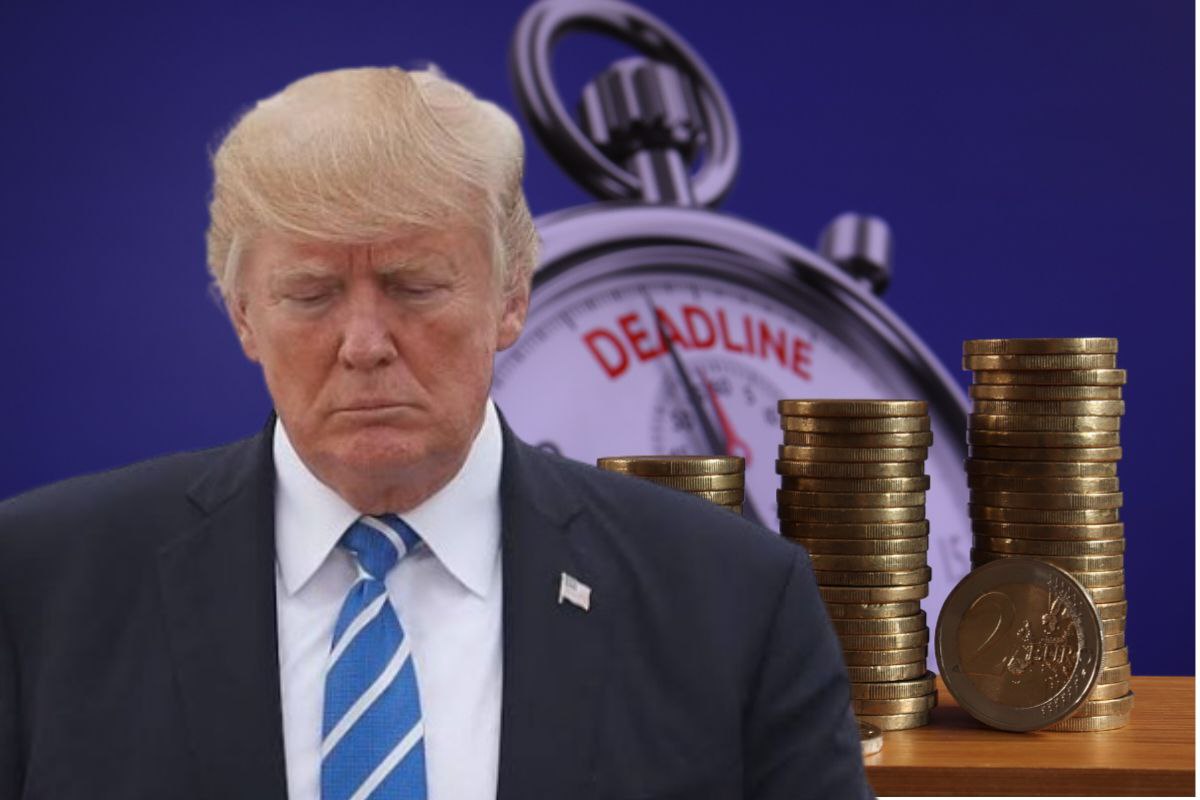The $36 Trillion Problem:The U.S. is facing a dangerous and unprecedented fiscal crisis — not because of recession, war, or pandemic, but due to deep-rooted structural imbalances. With annual spending outpacing revenue by nearly $2 trillion and interest payments on debt exploding past the defense budget, America’s long-term economic future is at serious risk. This article breaks down the causes, consequences, and urgent choices ahead as the U.S. hurtles toward a potential debt-driven crisis.
The $36 Trillion Problem:America’s Budget Bomb Is Ticking Even in Good Times
The new U.S. federal budget has officially locked in a long-term, structural imbalance between what the government spends and what it earns. Unlike previous fiscal challenges caused by wars, housing collapses, or pandemics, this one is different—it’s baked into the system.
Annual spending is now close to 7 trillion dollars. Revenue, however, is only about 5 trillion dollars. That leaves an annual deficit of approximately 1.8 trillion dollars. That deficit equals nearly 7 percent of the country’s GDP, which is almost twice the 50-year average of 3.8 percent.
What makes this situation truly alarming is that it’s not a one-time fluke. This isn’t pandemic relief or emergency stimulus spending. The economy is growing. Unemployment is low. There’s no major financial meltdown.
And yet the deficit is this large. That means this isn’t a cyclical deficit—it’s structural.
Let’s talk about debt. The national debt of the United States has already crossed 36 trillion dollars. That’s now 100 percent of the country’s GDP.
And if no significant changes are made, the national debt is expected to rise to between 52 trillion and 59 trillion dollars by the year 2035. At that point, the debt-to-GDP ratio will reach somewhere between 118 percent and 135 percent—far above the post-World War II record of 106 percent.
This is happening because the government keeps running huge deficits year after year, consistently spending more than it collects in taxes. And just like a credit card, as the balance grows, so do the interest payments.
In 2024, the federal government spent 882 billion dollars just on interest payments alone. That’s more than the entire U.S. defense budget.
And by 2035, those interest payments are expected to soar to 1.8 trillion dollars annually.
This means that over 20 percent of every tax dollar collected in the future could go only toward interest payments—not toward schools, roads, healthcare, or even defense.
And it gets worse.
By 2035, interest costs are expected to be 1.7 times higher than what the country spends on national defense. That isn’t just a budget issue—it’s a national security issue.
Every dollar spent on interest is a dollar that can’t be used to invest in the nation’s future.
So what’s driving this crisis? It’s not a matter of government inefficiency or too many office supplies. It comes down to three primary forces:
• Mandatory spending, including Social Security, Medicare, and Medicaid
• Interest payments on the growing debt
• A tax revenue system that’s failing to keep pace
Mandatory programs are ballooning because of demographic shifts. The aging Baby Boomer population is increasing the number of retirees who rely on Social Security and Medicare. Additionally, more people require Medicaid, and longer life spans are increasing the total amount paid per person.
These programs are protected by law, meaning their costs automatically rise, regardless of economic conditions.
Meanwhile, tax revenues have grown, but not fast enough. A mix of outdated tax structures and past tax cuts has weakened the government’s ability to keep up with rising costs. If Congress decides to extend the Trump-era tax cuts, revenue could fall even further, worsening the imbalance.
As mandatory spending and interest grow, the portion of the budget available for discretionary spending—things like defense, education, and infrastructure—continues to shrink. These are the areas Congress debates each year, but they’re increasingly being squeezed out of the picture.
Here’s why that matters:
• Government borrowing crowds out private investment. As the U.S. borrows more, interest rates rise, making it more expensive for consumers and businesses to borrow. That can slow economic growth.
• There’s less fiscal flexibility. When so much of the budget is locked into automatic payments, the government loses its ability to respond to emergencies, disasters, or future crises.
• Global risk rises. If investors lose confidence in U.S. fiscal stability, they may demand higher interest rates—or stop lending altogether.
Some argue that the Federal Reserve can just print money to cover the deficit. But that’s dangerous.
If the Fed begins financing more and more of the federal deficit, it could spark inflation, weaken the U.S. dollar, and erode global trust in America’s ability to manage its finances. That, in turn, would raise the cost of imports and cause even more economic strain.
Why is that trust so critical? Because U.S. Treasuries are more than government bonds—they are the foundation of the global financial system.
If the world stops trusting American fiscal management, the fallout would stretch from Wall Street to global trade to geopolitical power.
History shows what happens when countries spend more on interest than on innovation or defense. Decline follows—not immediately, but slowly and surely. It weakens the economy, erodes global influence, and undermines internal stability.
That’s the path we’re currently on.
To fix it, the U.S. would need to bring its budget deficit down from 7 percent of GDP to closer to 3 percent. That would require extremely tough decisions:
• Cutting government spending
• Raising taxes
• Slowing the growth of debt interest
But here’s the catch: the longer we wait, the more painful those decisions will become. Every year of inaction increases the debt burden, which increases interest payments, and shrinks the government’s ability to respond to new problems.
If we continue to ignore the issue, we could add another 22 trillion dollars to the national debt over the next ten years. The debt-to-GDP ratio could skyrocket to 156 percent in the coming decades—territory that no advanced nation has ever safely entered.
And we can’t just print our way out of it. At those debt levels, even small shifts in global interest rates could trigger a crisis:
• Investors panic
• Rates spike
• Debt becomes unpayable
• Confidence collapses
This isn’t theoretical. Something similar happened to the U.K. in 2022. Their deficits were far smaller, yet the bond markets revolted, and the government was forced to backtrack.
The stakes couldn’t be higher.
If the U.S. fails to act, we risk:
• Slower long-term economic growth
• A weakened and overburdened social safety net
• Skyrocketing taxes on future generations
• A devalued dollar that hurts consumers and global influence
• Erosion of U.S. leadership on the world stage
The next generation will inherit the consequences: fewer opportunities, greater financial strain, and a broken system that they didn’t create—but will have to live with.
This is not a crisis of tomorrow—it’s a crisis unfolding now. In good times. And that’s exactly what makes it so dangerous.
Disclaimer:
This article is for informational and educational purposes only. It does not constitute financial, investment, or legal advice. The views expressed are based on current data and projections as of 2025 and are subject to change. Readers should consult with qualified professionals before making any financial or policy decisions.

